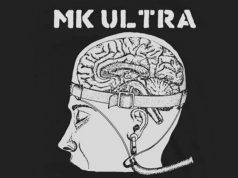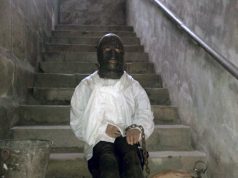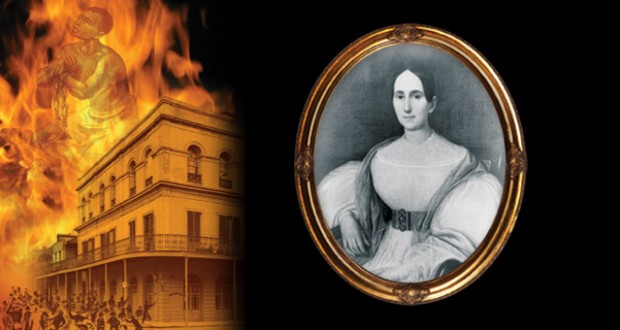
New Orleans is, without a doubt, one of the most characteristic cities in the United States of America. Beating heart of the State of Louisiana, it was founded in 1718 by Jean-Baptiste Le Moyne de Bienville under the name of La Nouvelle-Orléans, in honor of the Duke of Orléans, Philip II of Bourbon-Orléans. Capital of Louisiana from 1722 (and later from 1865 to 1880; it was the seat of government from 1864 to 1882), it was ceded to Spain in 1763, and then returned under French aegis in 1800. In 1803, thanks to the so-called “Louisiana Purchase”, the United States purchased Louisiana from France. It is in this historical context of aristocracy of European origin, colonialism, sudden and profound political and social changes that the protagonist of this story acst. Her name is Marie Delphine MacCarthy, also known as Madame Blanque. However, she has gone down in history as Madame LaLaurie (or Lalaurie).
Madame LaLaurie, three times married
The date of birth of Marie Delphine MacCarthy is uncertain: some sources indicate 1775, others 1780, others 19 March 1787. However, the birth of this enigmatic woman dates back to the dawn of the formation of the United States of America, whose declaration of independence dates back, as known, to July 4, 1776. She is the eldest of five children; her father is Louis Barthélemy de MacCarthy (Chevalier de MacCarthy), whose family had emigrated from Ireland to Louisiana around 1730. The surname MacCarthy, of clear Irish origin, was later abbreviated to Macarty or de Macarty, thus Frenchizing the wording and pronunciation. The mother is Marie-Jeanne L’Erable MacCarthy, born in Louisiana in May 1747 and married Louis Barthélemy de MacCarthy in July 1763. Marie Delphine, therefore, was born when New Orleans is under Spanish rule.
Marie Delphine’s family has power, a lot of power. And money, a lot of money. It was in fact part of that Creole aristocracy – the term used to identify the mestizo of Louisiana, in particular New Orleans – which held the political, social and economic reins of a state and a city at the centre of multiple attention, disputed by Spain and France. Her uncle – Esteban Rodríguez Miró y Sabater, husband of Marie Céleste Eléonore de Macarty – was governor of the Spanish American provinces of Louisiana and Florida from 1785 to 1791; her cousin – Augustin de Macarty – was mayor of New Orleans from 1815 to 1820.
The First Marriage
Marie Delphine, in June 1800, married Don Ramón de Lopez y Angulo, a senior Spanish officer. The beautiful St. Louis Cathedral in New Orleans is the setting for the important and long-awaited wedding.
During a trip to Spain – in 1804 – Marie Delphine gives birth to her firstborn, Marie-Borja Delphine Lopez y Angulo de la Candelaria, nicknamed Borquita. Soon, however, Marie Delphine will remain a widow.
The second marriage
In June 1808, Marie Delphine married Jean Blanque, a merchant, lawyer and banker. In short, a leading figure in high society in New Orleans in the early nineteenth century. It was at that time that Blanque bought a house in New Orleans, at 409 Royal Street. Villa Blanque. The marriage of Marie Delphine and Jean Blanque gave them four children: Marie Louise Pauline, Louise Marie Laure, Marie Louise Jeanne and Jeanne Pierre Paulin. But this marriage was also destined for a short time: Jean Blanque, in fact, died in 1816.
The third and last marriage
Nine years later, Marie Delphine is the protagonist of a third and final marriage. It’s still June, but the year is 1825. The new groom is Leonard Louis Nicolas LaLaurie. And it is thanks to the doctor’s surname that Marie Delphine Macarty will go down in history: the legendary Madame LaLaurie was born.
Madame LaLaurie, a mystery that has lasted for 184 years
The story of Madame LaLaurie is enriched with an important piece: the year 1831. The aristocratic woman bought a property at 1140 Royal Street, New Orleans, where, in 1832, a refined but inconspicuous two-storey house was to be built, including housing for slavery.
Slavery constituted, in the territories of the newborn United States of America, a consolidated and widely accepted reality, especially in the southern States, such as, for instance, Louisiana. The bloody American Civil war (1861-1865) is still far from being bitterly fought on the battlefields, but the precursors of the internal conflict have deep roots. On the eve of the conflict, in the spring of 1861, Louisiana (a confederate state) will have about 376,913 free men and as many as 332,520 slaves, equal to 46% of the population. Only South Carolina and Mississippi will have higher percentages, respectively of 57.2% and 55.2%.
Well, as already mentioned, the LaLaurie family owns slaves. Madame LaLaurie, aristocratic matron and qualified by ways and manners worthy of this social rank, however, is at the center of poisonous slander. Rumors, gossip and suspicion initially not supported by incontrovertible evidence, but nevertheless increasingly insistent and capillary. These stories speak of a brutally cynical, violent woman: she would mistreat her slaves by inflicting atrocious tortures on them. The city administration, as a result of these rumors, carries out some checks in the incriminated residence, that elegant residence at 1140 Royal Street. There are no apparent anomalies. On the contrary, Madame LaLaurie shows kindness towards her slaves, showing herself to be affable and helpful. She even freed two of her slaves, thus making them free men: Jean Louis in 1819 and Devince in 1832.
The testimonies collected by the English thinker, philosopher, writer and journalist Harriet Martineau perfectly document the dark side of the matron of New Orleans. It is precisely the Martineau’s accounts, patiently obtained during her long journey on American soil (1834-1836), that constitute, today, one of the most valid testimonies in real time about the macabre facts linked to Madame LaLaurie.
A double personality
It seems, therefore, that the noblewoman of Louisiana shows a double life, a “double personality”: kind and accommodating in public, sadistic, violent and ruthless at home, away from prying eyes.
The stories, however, become more and more macabre. It is told about a certain Lia (or Leah), a 12-year-old slave who fell from the roof of Madame LaLaurie’s house. Pursued and beaten by the Irish-born woman, the young girl – according to LaLaurie, guilty of clumsy gestures while combing her hair – loses her life in this dramatic circumstance, although never completely clarified and still at the center of controversial historical speculation in New Orleans. Some say she fell accidentally, others say she was deliberately pushed by LaLaurie. The girl’s body is buried in the gardens of the villa. This episode, however, causes a veil to begin to tear. Slowly but surely. Suspicions multiply. Madame LaLaurie is increasingly disliked by the community. The LaLaurie family is thus deprived of nine slaves. But the LaLaurie soon reappropriate these servants, buying them back through an intermediary. It also seems that Marie Delphine LaLaurie keeps one of the cooks chained to a kitchen stove; moreover, she seems to beat her daughters when they try to feed their mom.
1834: the fire and the macabre discovery
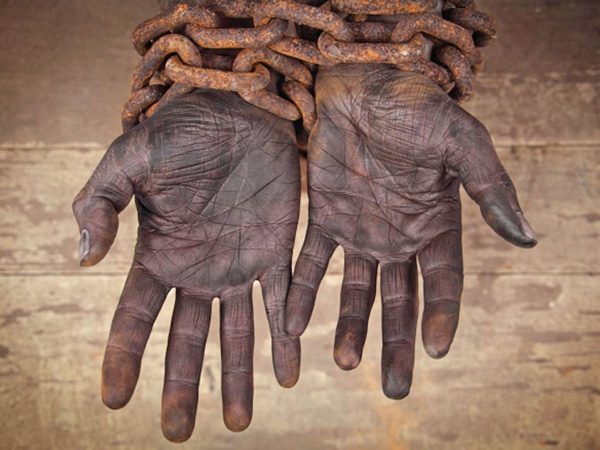
April 10, 1834: a watershed date for New Orleans and for one of the most representative aristocratic families in view of the entire city, the one linked to Madame Marie Delphine LaLaurie.
A fire breaks out in the now notorious residence at 1140 Royal Street. The fire comes from the kitchen. Rescue is not long in coming. What is revealed in front of the eyes of the astonished rescuers is unimaginable.
Chained to the stove, they find a cook. She was the one who set the fire: she preferred to take her own life instead of being the victim of the umpteenth, inhuman torture by her mistress, Madame LaLaurie. But that’s not all. The rescuers, doctors, police and firefighters, come across seven slaves – as reported in the chronicles of the time – horribly mutilated, suspended at the neck and with their limbs apparently stretched and torn from one end to the other.
The New Orleans Bee, on April 11, 1834, writes: “Seven slaves more or less horribly mutilated were seen suspended by the neck, with their limbs apparently stretched and torn from one extremity to the other. Language is powerless and inadequate to give a proper conception of the horror which a scene like this must have inspired. We shall not attempt it, but leave it rather to the reader’s imagination to picture what it was.”
And again:
“These slaves were the property of the demon, in the shape of a woman whom we mentioned in the beginning of this article. They had been confined by her for several months in the situation from which they had thus providentially been rescued and had merely kept in existence to prolong their suffering and to make them taste all that the most refined cruelty could inflict. But why dwell upon such aggravating and painful particulars! We feel confident that the community share with us our indignation, and that vengeance will fall heavily upon the guilty culprit. Without being superstitious, we cannot but regard the manner in which these atrocities have been brought to light as an especial interposition of heaven.”
These slaves were the property of the demon, in the form of a woman we spoke about at the beginning of this article. They had been confined by her for several months in the situation from which they had been providentially saved and kept in existence to prolong their suffering and make them savor all that the most refined cruelty could inflict. But why dwell on such aggravating and painful details! We are confident that the community will share our indignation with us and that vengeance will fall heavily on the culprit. Without being superstitious, we cannot fail to consider the way in which these atrocities were brought to light as a special interposition of heaven.
People made skeletal, undernourished, physically and psychologically worn out. There is also talk of a slave wearing an iron collar and a male slave with deep wounds all over his body, from head to toe. Injuries now infected and full of worms.
The testimonies chase each other confused and without control: slaves whose bodies show wounds, evident signs of violent lashes. Some – it is said – wear sharp collars to force the head to a position constantly and perpetually erect and statically forced. Other slaves have their hands tied above their heads, others are forced to kneel. It seems that in the courtyards of the villa numerous corpses, equally mutilated, are being dug up. In the attic, there are rumours of the discovery of a hundred people, many of whom are still alive but in very poor physical condition.
Truth or legend?
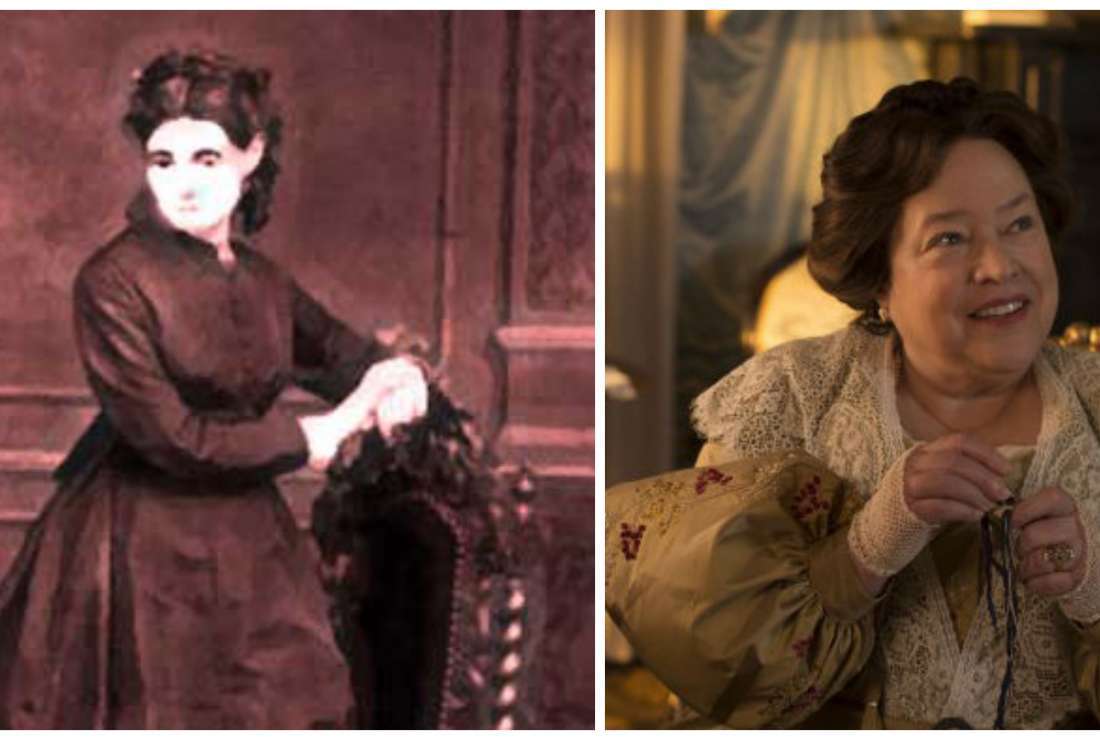
As is often the case in these circumstances, the boundary between reality and urban legend suddenly becomes blurred and thin. So subtle, so indistinct and so invisible that it completely disappears. Madame LaLaurie’s villa turns into a theatre of authentic horror stories. At the same time, the aristocratic woman now embodies the evil par excellence, a demon, borrowing the terminology used in that April 11, 1834 by the editors of The New Orleans Bee: cold, double, skillful concealer, horribly sadistic.
Reality and fantasy intertwine to the point of producing stories as disturbing as they are unlikely exaggeratedly unlikely, unsupported by incontrovertible proofs and testimonies. Stories that were born the day after that fateful April 10, 1834, have been fed and further embellished throughout the twentieth century: books, novels, ghost tours. Voices that tell of slaves with their mouths full of excrement, their lips sewn together and their skin sadistically embroidered. Slaves deprived of eyes, women with broken bones and recomposed to form a bizarre man-crab, others with intestines tied around the abdomen. Another story tells of a man with amputated limbs and skin cut circularly, as if to make the individual look like a caterpillar. Legends fuelled by popular folklore that is never tired and full; the character of Madame LaLaurie will be mentioned in films, video games, television series (American Horror Story, “Coven”, third season), books, music, will be the focus of documentaries and TV broadcasts. Probably, the most faithful historical reconstruction of the events related to Madame LaLaurie is contained in the book “Madame Lalaurie – Mistress of the haunted house”, written by Carolyn Morrow Long (2012).
The fact is that the community of New Orleans, learned of the atrocities consumed within the residence of Madame LaLaurie, pours into the street. An angry crowd, in search of revenge. The building is looted, destroyed: rooms, furniture, walls. What used to be an admired residence, one of the most appreciated in New Orleans, is now a heap of devastation and anger. The residence will pass from hand to hand the day after the macabre discoveries; Charles Caffin, owner of the house since 1837, seems to have added the third level, floor where today, erroneously, it is said that torture has taken place. Over the years, the building will take on the appearance that we can now admire.
The building at 1140 Royal Street, however, will live a long oblivion: a real damnatio memoriae. A cursed palace, infested with ghosts, they say. Only at the end of 1800, the building will be brought back to life: restored and restructured, it will be used for various purposes. Even the well-known actor Nicolas Cage was the owner: in April 2007, through the intermediation of the Hancock Park Real Estate Company, LLC, he bought the residence for the “modest” sum of $ 3.45 million. However, the house was seized in 2009.
What happened to Madame LaLaurie?
The fire at the LaLaurie residence at 1140 Royal Street, New Orleans, is a turning point. In every sense. Not only are the wicked deeds perpetrated by Marie Delphine LaLaurie finally discovered and revealed, but it also marks the disappearance of the woman herself. What happens to Madame LaLaurie? From that April 10, 1834, in fact, the noblewoman’s tracks were lost. Even with regard to the fate of the aristocratic torturer, conjectures abound. According to the testimonies collected by Harriet Martineau, it would seem that Madame LaLaurie first escaped, with the help of her coachman, to Mobile, in Alabama. From there, a daring escape to Paris, under a false name. The circumstances of his death are still shrouded in a blanket of historical mystery. According to the novelist George Washington Cable, Madame LaLaurie dies on the occasion of a wild boar hunt in France. Other less reliable sources say that LaLaurie returns to the USA under a false name.
In the 30s, Eugene Backes, sacristan at the St. Louis Cemetery No.1 (in New Orleans there are three Catholic cemeteries with this name), finds an old copper plate on which is engraved the following inscription: “Madame Lalaurie, née Marie Delphine MacCarthy, décédée à Paris, le 7 Décembre, 1842, à l’âge de 6 (?)”, or “Madame Lalaurie, née Marie Delphine MacCarthy, died in Paris on December 7, 1842 at the age of 6 (?)”. Therefore, the age of the woman at the moment of her death is not fully legible. The Parisian archives, however, report that Madame LaLaurie died on December 7, 1849, at the age of 69 (therefore, she was born in 1780). Madame LaLaurie rests in the cemetery St. Louis No.1, opened in 1789. The life of Marie Delphine McCarthy LaLaurie ends in the mists of time and historical memory.
A controversial woman, undoubtedly violent and devoted to torture and brutality towards her servitude. Black slaves forced to endure every form of nefariousness, both physical and psychological. Even in Louisiana in 1800, a state in which racial segregation and slavery are fundamental elements and not at all questioned by society, the acts committed by Madame LaLaurie appear as cruel as they are unjustified. A fury for its own sake.
Psychopathic or, more simply, a coldly and lucidly violent woman, who loves to mistreat her slaves out of fury against people considered indispensable but still inferior, because of their color and for being slaves? It has never been ascertained with certainty. It is difficult, in fact, to trace a criminal profile of the matron of Irish origin, since she has never shown signs that could herald terrible tortures.
There are also those who argue that, by giving for granted some documented violence, Madame LaLaurie has been the subject of hostility, by citizenship and the press, out of the ordinary. A real smear campaign. In this sense, anti-historical elements and urban legends that have overlapped over almost two hundred years of history have probably taken over factual reality. It is good, in fact, to frame Madame LaLaurie as a presumed murderer and presumed serial killer of slaves.
In the collective imagination, however, Madame LaLaurie embodies one of the most ferocious women of the nineteenth century. Her figure, icy and noble, transcends the ages, fascinates and disturbs at the same time. A woman whose dramatic story is full of myth, legend, ingredients that have distorted the historicity of some events, but, at the same time, have made even more incredible and famous a story that smells of macabre mystery, steeped in that breath always winking nineteenth century.
We see her there, portrayed in that famous painting: a thin face, black hair patiently combed and styled, aristocratic dress. And that smile. Mocking, enigmatic, almost irreverent.
A look that will hide forever shady secrets and dark mysteries.




